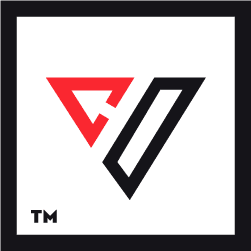If you ask people what ‘creating a brand‘ is, there’s a high chance of them answering that it’s all about creating a logo and developing a color palette. And while this answer is not entirely wrong, it’s not entirely right either. Fear not, I will walk you though the process of branding your business in this this article.
See, the common misconception on the difference between an effective brand and a good logo has been around for a very long time. Up until today, a lot of people associate branding with one logo. For instance, if you ask them what Coca Cola’s branding is, people are likely to reference its iconic logo.
Why does it matter that people know how to differentiate one from the other? This is because it’s detrimental to building a brand! If you’re an entrepreneur looking for a guide on how to start branding your business, you’ve come to the right place.
But before anything else, let’s get down to the business of differentiating a brand from a logo!
Defining Brand Identity
Ultimately, a logo is part of a branding, but it’s not the brand of a business. Your brand is determined by how people perceive your audience — your image. When a business brands itself, it shapes a recognizable image using certain elements.
And the elements that create that notable image is called brand identity. They are composed of intangible and tangible components. For instance, the brand identity of certain products or services often includes a brand message and visuals like a logo! Generally, a strong brand identity is one that’s easily identifiable and one that effectively reflects the personality of a business. Now that we’ve gotten our definitions sorted out, let’s now discuss its importance to small businesses!
The Purpose of Branding
Ultimately, your brand identity reflects your brand. It’s that one component of your company’s identity that lives and develops in the minds and hearts of your target market.
Hence, it plays a significant role in the overall success of your business!
- Brand New Face
When people said that a logo is a company’s face — and they’re not wrong. While it may be true that being the face of a business, a logo should be cool and eye-catching, it still plays associative roles to your identity. A logo should be able to effectively communicate your company’s identity in one visual. Your brand message and values should be encompassed within it.
- Constructor of Credibility And Trust
Having a solid identity doesn’t just help you stand out against your competitors, it also helps your company take a more authoritative stance in the market. If your brand’s identity is consistent through time, it starts developing credibility and trust among target audiences.
Hence, it’s a must that when it comes to developing a brand, consistency is prioritized. If not, your consumers will have a hard time connecting with your brand.
- Trusted Guide
With a clear brand identity, businesses automatically get themselves a brand guide! This trusted guide helps you identify which elements should be seen in your advertisements and marketing strategies — be it traditional and digital.
- Generates New Customers
Once you have a clear and consistent identity, your company can easily attract consumers that share the same values as you do.
And once they start feeling a sense of belongingness with your brand, you can guarantee they’ll stick with you for a long time!
How to Start Branding Your Business
After discussing the importance of branding, it’s only apt we start talking about the process of developing one! Now, generally, developing a brand as well as a brand strategy is not easy.
Oftentimes, small businesses seek out the help of sports digital marketing companies like Creatitive that specialize in branding companies — and it’s not really surprising to know. In order to understand why seeking the help of branding experts is the best way to go, one must first learn the process of branding your business!
Getting to Know Yourself
Market research is considered to be a standard operating procedure for businesses — and it’s the same thing for branding! Before you start doing anything else, it’s important that you delegate sometime knowing yourself, your audience and your market.
Learn your target consumers wants and needs. Figure out what each demographic wants from your company and from this, you can start determining your brand’s value proposition to its audiences!
As you work on your brand promise or value proposition, you can also start working on learning about your competition! List down some of your primary rivals and keep an eye on them. Start thinking about what makes you different from your opponents and the products or services that only you can provide.
Aside from this, this is also the time wherein you need to start figuring out your mission statement. What does your brand want to achieve? What is its motivation for offering these products or services? A clear mission statement is a must for every brand!
Creating A Logo & Building A Brand Guide
Now that we’ve figured out what your brand is inside and out, we can start bringing it to life using visual elements like logos, types, and color palettes!
As we’ve mentioned earlier, while the logo isn’t the entire brand, it remains to have a detrimental role to it. It’s the most recognizable aspect of your business’ identity, hence, it’s important that it effectively encomapsses who you are. Keep in mind that your logo will be seen everywhere!
But before you start coming up with your own designs, you must first come up with your own color palette and type! These two visual elements will enhance your identity through your logo. When you’ve finally decided on your color palette, your type and your logo, everything must be documented into a brand guide.
Brand guides are often used by businesses to ensure consistency in everything their company releases. From the packaging of its products down to the graphics used on their social media accounts!
Nowadays, consistency can either make or break the success of a brand. Hence, brand guides have become a must for everyone!
Finding Your Language
With your brand already on its developing stages, it’s time for you to start thinking about how you’re going to connect with your consumers and where! The voice a company uses to talk to its target audiences is called brand language.
Think about your brand’s personality and determine which kind of language you’ll be using to address your consumers. Is it formal or not? This will influence the copy you’ll use for your website and the content you’ll be releasing on your platforms.
Keep in mind that just like your logo, your language will be seen in everything that your company does. So it’s a must that you carefully curate your voice!
Why Consultation Matters
Now that we’ve delved into the process of branding a company, it’s understandable to say that it’s a pretty long road ahead — not to mention complicated. But still, it seems like branding is something that can be done by companies themselves.
While this may be true, branding agencies like us often use tools that make things much easier like a branding questionnaire! The test is specifically created to help business and marketers alike develop a brand. Additionally, we also offer other important services such as web design and graphic design.
You can sit down with us and not worry about a thing on developing your brand! Wanna learn more about branding? Check out our 6-part series on athlete branding and marketing!







